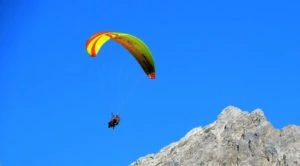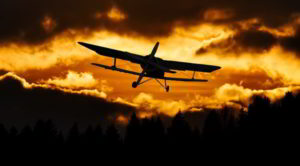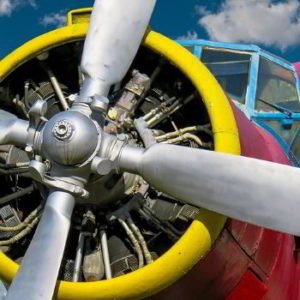
Paragliding Explained
Paragliding is both a recreational and competitive sport. It consists of flying paragliders, which are a lightweight and free-flying foot-launched glider aircraft. The pilot sits in a harness and is suspended below a fabric wing whose shape is maintained by suspension lines, pressure of air entering the vents in the front of the wing, and the forces of air flowing over the outside of the wing. Despite no engine, paraglider flights can cover many miles and last many hours.
Conversely, powered paragliding (PPG), is a type of ultralight aviation. In PPG, the pilot wears a motor on his or her back that provides enough thrust to get the paraglider off the ground and up in the air. A PPG can be launched off the ground, in still air, by the pilot alone. In many countries around the globe – the United States included – PPG is minimally regulated. In the U.S., PPGs do not require a pilot’s license but are regulated by the Federal Aviation Administration (FAA) and need permission from the nearest airport to take off.
The United States Powered Paragliding Association (USPPA) reports that PPG is safer than riding motorcycles but more dangerous than riding in passenger cars. The biggest risk of serious injury is the pilot’s body coming into contact with a spinning motor propeller. After that, the next biggest risk is resulting from likely pilot error that causes the paraglide to fly into something other than a landing zone. Sometimes, pilots pack a reserve parachute that is designed to open up in as little as 50 feet of altitude.
To consult with an experienced air accidents lawyer today
855-780-9986
Proving Liability
In the Melbourne Beach case, the injured paraglider may be able to file a personal injury lawsuit against the paragliding company – assuming someone was pulling him at the time of the crash. If the injured paraglider can establish that the company was negligent or reckless, he may have a valid personal injury lawsuit. In order to establish negligence under Florida law, the injured paraglider must show that the company owed him a duty, this duty was breached, the breach was the actual and legal cause of the accident, and that he suffered damages as a result.
Likewise, if the actual equipment had some defect – such as its design, manufacture, or warning labels – he may also have an injury case under a product liability action. A negligence or strict liability theory may be used in product liability claims. Under strict liability, if the injured paraglider can show the defect made the product unreasonably safe – and the manner in which he used the equipment was its ordinary and intended use – then he need not prove negligence to succeed.
Finally, if the paraglider acted recklessly or negligently, the utility company may have a cause of action against him seeking monetary compensation for necessary repairs to the powerline that was damaged during the crash.
If the injured paraglider can establish that the company was negligent or reckless, he may have a valid personal injury lawsuit.
Space Coast Personal Injury Attorneys
If you have been involved in an accident in Melbourne Beach, or any other part of Brevard County, and suffered an injury due to the fault of another, contact the personal injury attorneys at Bogin, Munns & Munns.
==========
NOTICE: The article above is not intended to serve as legal advice, and you should not rely on it as such. It is offered only as general information. You should consult with a duly licensed attorney regarding your Florida legal matter, as every situation is unique. Please know that merely reading this article, subscribing to this blog, or otherwise contacting Bogin, Munns & Munns does not establish an attorney-client relationship with our firm. Should you seek legal representation from Bogin, Munns & Munns, any such representation must first be agreed to by the firm and confirmed in a written agreement.
Call or Submit Our Consultation Request Form Today





